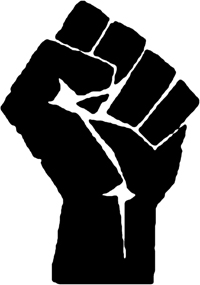| Part of the series on Statism |
|
Statist Ideologies Statist Organizations |
Darnussian nationalism is a common notion for strong nationalist movement within Darnussia and/or Narikaton. It can be separated into two major factions: Classic Darnussian nationalism and Narikatonite nationalism.
Classic Darnussian Nationalism[]
Classic Darnussian Nationalism is an ideology not tied to the political field. It emphasis’ on multiculturalism, as Darnussia is a nation split upon several cultures and ethnicities. It’s main form was always the believe in strong government, strict moral values and limited civil liberties. Often in history Darnussian Nationalism has been based on oppression of one or more of the other ethnicities within the nation, and it has generally been extremely isolationistic ideology.
First time the term Darnussian Nationalism was used, can be traced back to the latter years of the Kingdom of Darnussia. After the coronation of Marcel II, the politics within Darnussia were driven from racially and culturally segregated to unionism. All people were considered Darnussians, regardless of their cultural and ethnical roots.
Darnussian Nationalism was one of the strongest ideologies behind the Brief Revolution, where Darnussian Nationalists attempted to dethrone the king. After the fall of the Kingdom, Nationalism was forgotten, until Lusitânians rose to power in 24th century, followed by Deltarian Occupation. Darnussian Nationalism started to rise again, with strong rhetoric against the Lusitânians and Deltarians. Popular Revolutionary Front became the leading party for Darnussian Nationalism in the following centuries, which saw a bloody civil war and another foreign occupation.
After the Hobrazian invasion, Darnussian Nationalism started to die down again, and it was replaced by neo-Patriots. However, in 25th century, National-Socialist Party of Darnussia returned and became the vessel for Darnussian Nationalism, and later Darnussian Liberation Army continued the tradition in 26th century. However, it slowly started to move towards Narikatonite Nationalism, and by the end of the 26th century, Narikatonite Nationalism started the Second Darnussian Civil War.
After the civil war, Darnussian Nationalism was dominated by Narikatonite Nationalism. Darnussian Nationalism made it’s return after a communist state was created in Darnussia in late 28th century. It was Darnussian Nationalists who liberated the nation from a totalitarian socialist state.
In modern day Classic Darnussian Nationalists are still active, mainly under the Darnussian National Party banner. However, the Narikatonite Nationalists have also returned, and it is not clear if the two can coexist and co-operate, with the other standing for unionism of the Darnussian cultures, and the other standing for superiority of the Narikatonite culture.
Narikatonite nationalism[]
While the Narikatonite nationalism follows the same roots as the Classic Darnussian nationalism, they have few notable differences. Narikatonite Nationalism often includes ideas of Narikatonite superiority over the mainlanders, who were refered to as "the lesser people" by famous eugenicist and author Wilhelm Crule in the late 20th century. The basis of the superiority in Crules writings is drawn from history as he views the Unification War of Darnussia as a crusade to bring Narikatonite civilization to the savage mainlanders. The character of King Darntus as the ultimate Narikatonite is also common in Crule's literature. Later Pro-Narikatonite author, Daniel W. Alois also noted in 24th century that by far the large majority of literature was written in Narik instead of Darnus and he stated that Darnus was the langauge of the plebs while Narik was the language of the nobility and civilization.
There have been two periods of significant periods when Narikatonite nationalism rose and peaked. The first was in the late 26th century and early 27th century when the Second Darnussian Civil War ripped the old language dispute open again. The fragile United Republic was unable to suppress the Pro-Narikatonite movement that finally took over the nation with notorious monarchist politician Claude Deimore. After Deimores fascist reign as Imperial Viceroy and the anarchy that followed the Deimore Incident, Narikatonite nationalism fell. It, for the next few centuries, became a taboo, mainly because of the actions of Deimore, and was heavily persecuted.
Narikatonite nationalism first came to major attention again in 3067, when the Narik Uprising by a group of radicals who supported the thoughts and ideas of Crule and Alois tore the fabric of Darnussian society. The harsh treatment of the failed rebels helped draw sympathy for the Narikatonite cause, this time helping embedding it far more deeply into Narikatonite culture. As a result, in 3125, the Narik Wars broke out, a serious of extremely bloody conflicts between Darnussia and Narikaton that at more than one point almost drove the whole of Terra to all-out war.
| Darnussian Nationalism |
|---|
| Political Organisations |
| National-Socialist Party of Darnussia | Popular Revolutionary Front | National Conservative Patriotic Party | Darnussian Liberation Army | United Liberation Army | True-Born Darnussians |
| Ideologies |
| Fascism | National Socialism | Socialism | White supremacy | Radical Nationalism | Narikatonite Nationalism |
| People |
| Armando Muammar | Marcus Manticore | Rafael Sanz Durán | Anton Robervou | Joshua C. Mastertoni | Claude Deimore |

